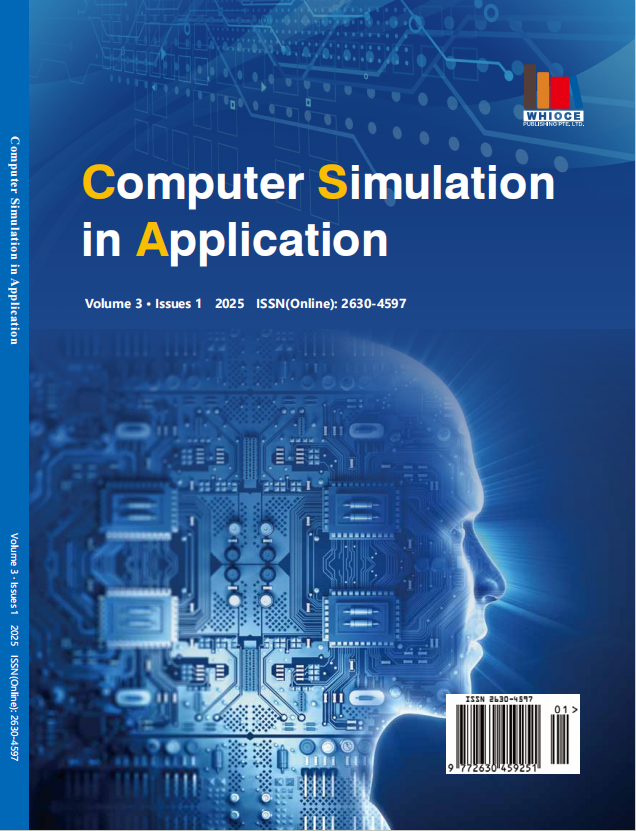Machine Learning based Enterprise Financial Audit Framework and High Risk Identification
DOI:
https://doi.org/10.18063/csa.v3i1.918Keywords:
Enterprise financial audit, machine learning, random forest, SVM, KNNAbstract
In the face of growing global economic uncertainty, financial auditing has become essential for ensuring regulatory compliance and preventing systemic financial risks. Traditional manual auditing methods are increasingly challenged by large data volumes, complex business structures, and evolving fraud tactics. To address these issues, this study explores an AI-driven financial audit framework and high-risk identification system for enterprises, leveraging machine learning to enhance audit efficiency and accuracy. Using a dataset from the Big Four accounting firms (EY, PwC, Deloitte, KPMG) spanning 2020 to 2025, the research analyzes trends in risk assessment, compliance violations, and fraud detection. The dataset includes critical indicators such as audit project counts, high-risk cases, detected frauds, and compliance breaches, while also reflecting the role of AI in audit automation, employee workload, and client satisfaction. To build a robust risk prediction model, three machine learning algorithms—Support Vector Machine (SVM), Random Forest (RF), and K-Nearest Neighbors (KNN)—are compared. SVM leverages hyperplane optimization for complex classifications, RF integrates multiple decision trees to handle nonlinear, high-dimensional data with strong resistance to overfitting, and KNN uses distance-based classification for adaptable performance. Through hierarchical K-fold cross-validation and evaluation via F1-score, accuracy, and recall, Random Forest demonstrates the highest performance with an F1-score of 0.9012, especially excelling in detecting fraud and compliance anomalies. Feature importance analysis highlights audit frequency, historical violations, employee workload, and client ratings as key risk predictors. The study suggests that enterprise audit systems adopt Random Forest as a core model, extend data features through feature engineering, and implement real-time monitoring. This research offers valuable insights into using machine learning for intelligent financial audits and risk management in modern enterprise environments.
References
Efunniyi C P, Abhulimen A O, Obiki-Osafiele A N, et al. Strengthening corporate governance and financial compliance: Enhancing accountability and transparency[J]. Finance & Accounting Research Journal, 2024, 6(8): 1597-1616.
Kurani A, Doshi P, Vakharia A, et al. A comprehensive comparative study of artificial neural network (ANN) and support vector machines (SVM) on stock forecasting[J]. Annals of Data Science, 2023, 10(1): 183-208.
Khajavi H, Rastgoo A. Predicting the carbon dioxide emission caused by road transport using a Random Forest (RF) model combined by Meta-Heuristic Algorithms[J]. Sustainable Cities and Society, 2023, 93: 104503.
Halder R K, Uddin M N, Uddin M A, et al. Enhancing K-nearest neighbor algorithm: a comprehensive review and performance analysis of modifications[J]. Journal of Big Data, 2024, 11(1): 113.
Efunniyi C P, Abhulimen A O, Obiki-Osafiele A N, et al. Strengthening corporate governance and financial compliance: Enhancing accountability and transparency[J]. Finance & Accounting Research Journal, 2024, 6(8): 1597-1616.
Ding R. Enterprise intelligent audit model by using deep learning approach[J]. Computational Economics, 2022, 59(4): 1335-1354.
Yao L. Application of Artificial Intelligence Technology in Enterprise Financial Audit[C]//2024 International Conference on Integrated Circuits and Communication Systems (ICICACS). IEEE, 2024: 1-5.
Peng C, Tian G. Intelligent auditing techniques for enterprise finance[J]. Journal of Intelligent Systems, 2023, 32(1): 20230011.
Zhao P, Deng L. Enterprise Financial Fraud Detection and Audit Optimization Based on Deep Learning[C]//International Conference on Computational Finance and Business Analytics. Cham: Springer Nature Switzerland, 2024: 3-14.
Zhu D. A fuzzy comprehensive evaluation and random forest model for financial account audit early warning[J]. Mobile Information Systems, 2022, 2022(1): 5425618.
Li J, Liu W, Zhang J. Automating Financial Audits with Random Forests and Real-Time Stream Processing: A Case Study on Efficiency and Risk Detection[J]. Informatica, 2024, 49(16).
Zhao H, Wang Y. A big data-driven financial auditing method using convolution neural network[J]. IEEE Access, 2023, 11: 41492-41502.
Banu M S, Parveen N, Gayathri R, et al. A Machine Learning Approach for Enhanced Security Using Blockchain in Finance Auditing Services[C]//2024 15th International Conference on Computing Communication and Networking Technologies (ICCCNT). IEEE, 2024: 1-6.
Özbaltan N. Applying machine learning to audit data: Enhancing fraud detection, risk assessment and audit efficiency[J]. EDPACS, 2024, 69(9): 70-86.
Zeng S, Li Y, Li Y. Research on audit opinion prediction of listed companies based on sparse principal component analysis and kernel fuzzy clustering algorithm[J]. Mathematical Problems in Engineering, 2022, 2022(1): 4053916.

